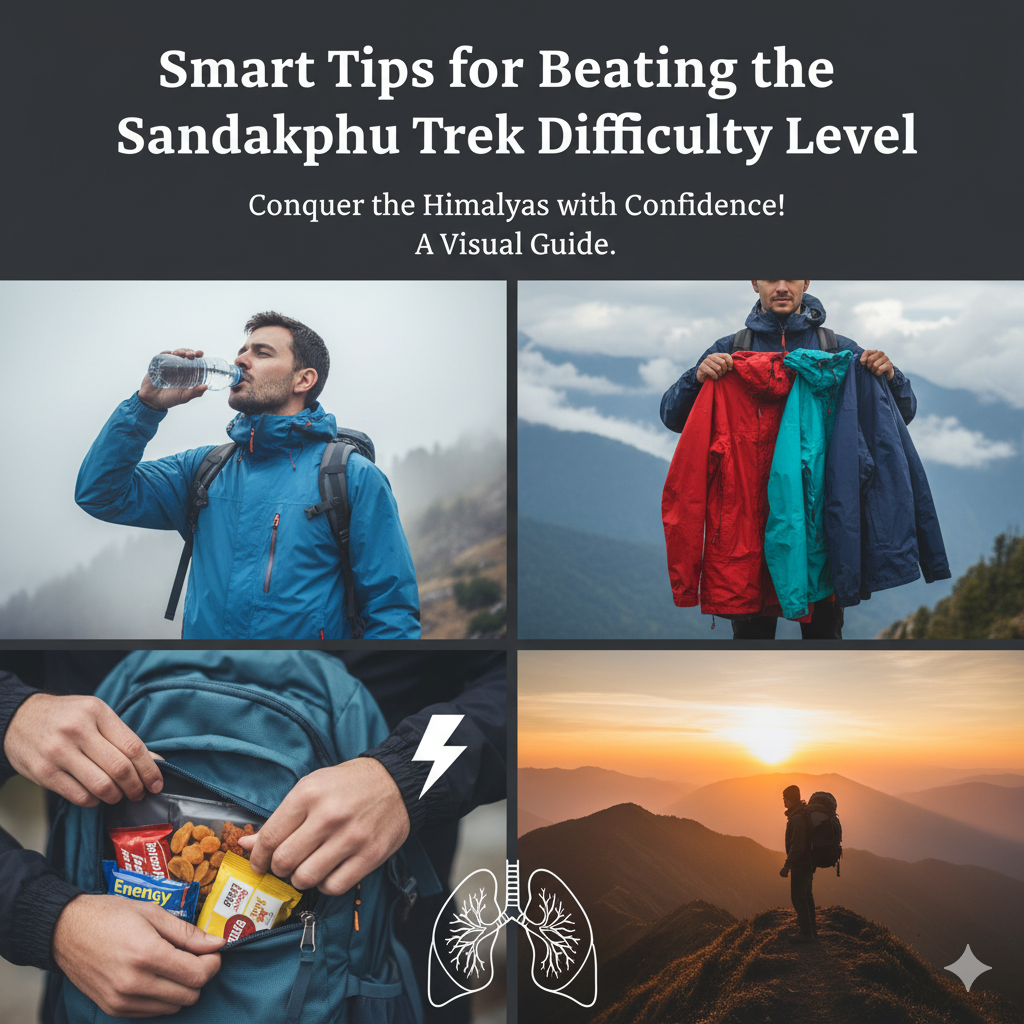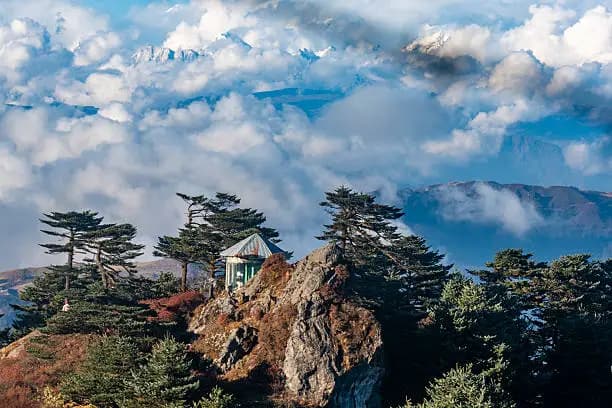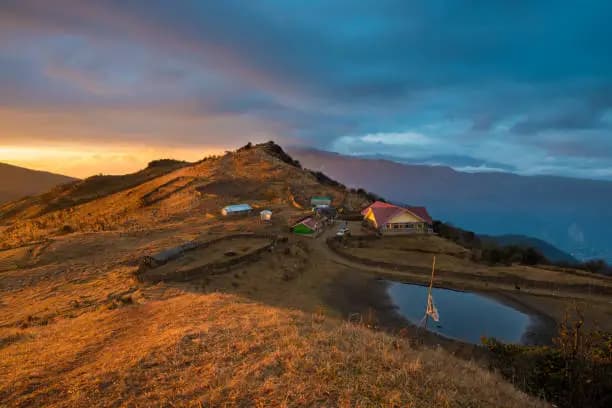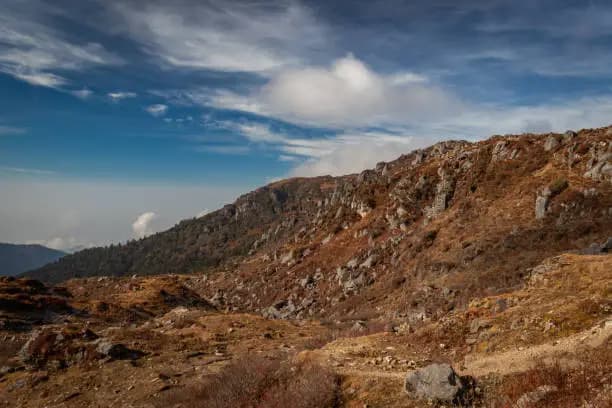If you’ve been day-dreaming about misty trails, mountain air, and the sight of giant peaks glowing orange at sunrise, Sandakphu might just be the trek for you. Before you zip up your rucksack, though, let’s talk about something most beginners quietly Google at midnight – the Sandakphu Trek Difficulty Level.
The Trail That Keeps Changing
This route runs along the Singalila Ridge, a thin line between India and Nepal. You start low among pines and end up almost touching the clouds. Every few hours the view flips – tiny villages, open meadows, thick forests, and then, suddenly, Kanchenjunga staring back at you.
That’s the fun part: just when you think it’s getting easy, the path tilts upward again. And that mix of comfort and challenge is what really defines the Sandakphu Trek Difficulty Level.
So, How Hard Is It Really?
Alright, here’s the honest truth – Sandakphu isn’t the kind of trek that knocks you flat, but it’s not exactly a walk in the park either. Most trekkers call it “easy to moderate.” Translation? You’ll sweat, you’ll huff, but you’ll also laugh and click photos on the way.
You climb to about 11,930 feet, where the air starts to thin just enough for you to notice. Each day means six or seven hours of walking, maybe ten to twelve kilometres. Some stretches are gentle, some are pure uphill drama – especially the last push before Sandakphu. Trust me, your legs will have opinions that day.
The weather plays its games too: warm sun by noon, sharp wind by evening. Nights between November and February? Pretty cold. And the terrain keeps changing – paved bits, rocky bits, muddy forest trails – a new surprise every hour.
So yeah, the Sandakphu Trek Difficulty Level sits comfortably in the middle: tough enough to earn bragging rights, kind enough not to break your spirit.
Getting Yourself Ready
Let’s be honest, even “easy” treks feel hard if your body’s been on vacation mode. A couple of weeks of prep can make the whole journey smoother.
Try this:
- Walk or jog four to five kilometres a day.
- Climb stairs whenever you can; forget the lift.
- Do a few squats or lunges — your knees will thank you.
- Breathe slow and deep; it helps later at altitude.
- Strap on a light backpack during practice walks.
Nothing fancy, just consistency. Once your legs get used to moving, the Sandakphu Trek Difficulty Level drops down a notch automatically.
Altitude and Weather – The Two Tricksters
The Himalayas love a bit of drama. One minute you’re walking in sunshine, the next you’re wrapped in fog. Sometimes snow decides to show up without warning.
The best policy? Don’t rush. Sip water often, eat small snacks, and take breaks before your body asks for them. Most first-timers handle the height pretty well if they pace themselves. And if the wind howls or the trail looks slippery, smile – that’s the mountains testing your patience.
When to Go
Pick the right season and you’ll wonder why people call it hard at all.
- Spring (March–May): Forests turn pink and red with rhododendrons. Easy weather, happy mood.
- Autumn (Oct–Nov): The sky clears up and those famous four peaks – Everest, Kanchenjunga, Lhotse, Makalu – stand in perfect line.
- Winter (Dec–Jan): Snow sprinkles magic on the trail, though you’ll work harder for each step.
- Avoid the monsoon. Mud, leeches, and fog don’t make great trekking partners.
The Mind Game
To be frank, half the challenge lives inside your head. Some mornings you’ll wake up tired, or the fog will hide every view you came for. That’s when you take a slow breath, maybe laugh at yourself, and keep walking. Talk to the locals, sip hot tea, listen to your boots crunch on the path – these small things pull you through.
Smart Tips for Beating the Sandakphu Trek Difficulty Level

- Drink water even when you don’t feel thirsty.
- Keep your pace slow and steady.
- Layer your clothes; mountain weather changes moods fast.
- Carry a few chocolates or dry fruits – quick energy, instant joy.
- Keep your backpack light; trust me, every extra kilo counts.
- Respect the trail and the people who live along it.
Do that, and the Sandakphu Trek Difficulty Level will feel more like a long, peaceful walk than a struggle.
Also Read: Want to know how much the entire journey costs? Check out our detailed guide on Sandakphu Trek Cost Per Day Stay for better trip planning.
Watch this amazing travel vlog to feel the beauty and thrill of the Sandakphu Trek before you take your first step on the trail.
Final Thoughts
The Sandakphu Trek Difficulty Level might sound moderate on paper, but out there it feels balanced – part challenge, part charm. For beginners, it’s a brilliant way to taste the Himalayas without diving into extreme terrain. You’ll test your limits, sure, but you’ll also watch the world’s tallest mountains turn golden in the morning light. And that, honestly, makes every tired muscle worth it.
FAQs
1. Is Sandakphu Trek good for first-timers?
Let’s be honest, yes! It’s beginner-friendly and full of cozy tea houses for rest.
2. How long does it take to finish?
Usually six to seven days, depending on your route and how often you stop for photos.
3. Is it very cold up there?
To be frank, nights can be freezing in winter, but the days stay pleasant.
4. What’s the toughest part?
That final climb to Sandakphu. Take it slow — the view at the top pays for the effort.
5. Is the trek really worth it?
Jokes apart, completely. Standing there with Everest and Kanchenjunga in front of you feels unreal.















